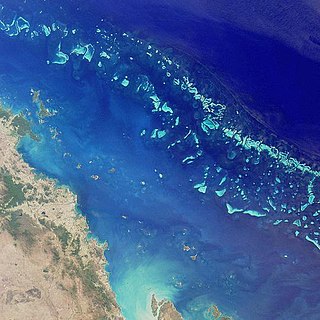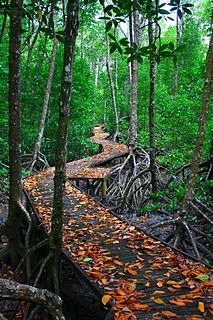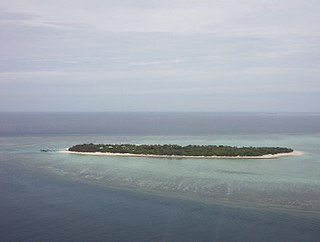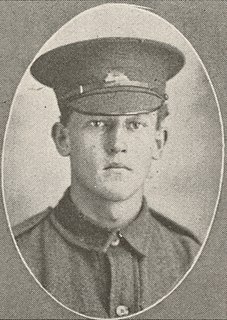Related Research Articles

The Great Barrier Reef is the world's largest coral reef system composed of over 2,900 individual reefs and 900 islands stretching for over 2,300 kilometres (1,400 mi) over an area of approximately 344,400 square kilometres (133,000 sq mi). The reef is located in the Coral Sea, off the coast of Queensland, Australia, separated from the coast by a channel 100 miles wide in places and over 200 feet deep. The Great Barrier Reef can be seen from outer space and is the world's biggest single structure made by living organisms. This reef structure is composed of and built by billions of tiny organisms, known as coral polyps. It supports a wide diversity of life and was selected as a World Heritage Site in 1981. CNN labelled it one of the seven natural wonders of the world in 1997. Australian World Heritage places included it in its list in 2007. The Queensland National Trust named it a state icon of Queensland in 2006.

The Great Barrier Reef Marine Park protects a large part of Australia's Great Barrier Reef from damaging activities. It is a vast multiple-use Marine Park which supports a wide range of uses, including commercial marine tourism, fishing, ports and shipping, recreation, scientific research and Indigenous traditional use. Fishing and the removal of artefacts or wildlife is strictly regulated, and commercial shipping traffic must stick to certain specific defined shipping routes that avoid the most sensitive areas of the park. The Great Barrier Reef is the largest and best known coral reef ecosystem in the world. Its reefs, almost 3000 in total, represent about 10 per cent of all the coral reef areas in the world. It supports an amazing variety of biodiversity, providing a home to thousands of coral and other invertebrate species, bony fish, sharks, rays, marine mammals, marine turtles, sea snakes, as well as algae and other marine plants.

Orpheus Island National Park is a national park on Orpheus Island, in North Queensland, Australia. The Aboriginal name for this island is Goolboddi Island. It is one of the Palm Islands group, 1,189 km (739 mi) northwest of Brisbane, as is Pelorus Island 800 metres (2,600 ft) to the north; both are in the Shire of Hinchinbrook. Besides Orpheus Island, the national park also includes Albino Rock, which is located 2.6 kilometres (1.6 mi) east of Great Palm Island. Orpheus Island is a continental island.

The Coral Sea is a marginal sea of the South Pacific off the northeast coast of Australia, and classified as an interim Australian bioregion. The Coral Sea extends 2,000 kilometres (1,200 mi) down the Australian northeast coast. The sea was the location for the Battle of the Coral Sea, a major confrontation during World War II between the navies of the Empire of Japan, and the United States and Australia.

The crown-of-thorns starfish, Acanthaster planci, is a large starfish that preys upon hard, or stony, coral polyps (Scleractinia). The crown-of-thorns starfish receives its name from venomous thorn-like spines that cover its upper surface, resembling the biblical crown of thorns. It is one of the largest starfish in the world.

Heron Island is a coral cay located near the Tropic of Capricorn in the southern Great Barrier Reef, 80 kilometres north-east of Gladstone, Queensland, Australia, and 460 km (290 mi) north-north-west of the state capital Brisbane. The island is situated on the leeward (western) side of Heron Reef, a fringing platform reef of significant biodiversity, supporting around 900 of the 1,500 fish species and 72% of the coral species found on the Great Barrier Reef. During the summer months Heron Island is also home to over 200,000 birds including Noddy Terns and Mutton Birds.

Dorothy Hill, was an Australian geologist and palaeontologist, the first female professor at an Australian university, and the first female president of the Australian Academy of Science.
Ron Josiah Taylor, AM was a prominent Australian shark expert, as is his widow, Valerie Taylor. They were credited with being pioneers in several areas, including being the first people to film great white sharks without the protection of a cage. Their expertise has been called upon for films such as Jaws, Orca and Sky Pirates.
Sir Charles Maurice Yonge, CBE, FRS FRSE was an English marine zoologist.

John Veron, complete name John Edward Norwood Veron, credited in research as J. E. N. Veron, and in other writing as Charlie Veron, is a biologist, taxonomist, and specialist in the study of corals and reefs. He is believed to have discovered more than 20% of the world's coral species.

The Great Barrier Reef is the world's largest reef systems, stretching along the East coast of Australia from the northern tip down to the town of Bundaberg, is composed of roughly 2,900 individual reefs and 940 islands and cays that stretch for 2,300 kilometres (1,616 mi) and cover an area of approximately 344,400 square kilometres (133,000 sq mi). The reef is located in the Coral Sea, off the coast of Queensland in northeast Australia. A large part of the reef is protected by the Great Barrier Reef Marine Park.

Ove Hoegh-Guldberg, is a biologist and climate scientist specialising in coral reefs, in particular bleaching due to global warming and climate change. He has published over 500 journal articles and been cited over 50,000 times.

The Coral Sea Reserves Ramsar Site comprises the 17,292 km2 of oceanic island and reef habitats within the former Coringa-Herald National Nature Reserve and the former Lihou Reef National Nature Reserve in the Australian Coral Sea Islands Territory.
St. Crispin's Reef is an elongate outer-shelf coral reef in the Great Barrier Reef, Queensland, Australia.

Heron Island Research Station is a marine research station located on Heron Island, an island within the Great Barrier Reef Marine Park, 80 km from Gladstone, off the coast of Queensland, Australia. It is located at the leeward end of a coral cay on a 10 x 5 kilometre platform reef. Although the island had been used as a turtle cannery in the 1920s, after this was abandoned, it was taken over as a resort in the 1930s, by Captain Christian Poulsen. A number of researchers travelled to the island from the 1930s using the resort facilities. The island became a National Park in 1943, and following the end of World War II, saw the first groups of university students from the University of Queensland arrive. Today the island is divided into three sections - the resort, research station and National Park.

Robert Endean (1925–1997) was an Australian marine scientist and academic at the University of Queensland.

Frank William Moorhouse was an Australian marine biologist. He is primarily known for his service as the Chief Inspector of the Fisheries and Game Department of South Australia from 1936 to 1959.
Low Isles is a locality in the Shire of Douglas, Queensland, Australia. In the 2016 census, Low Isles had a population of 0 people.

Valerie May Taylor AM is a conservationist, photographer and filmmaker, and an inaugural member of the diving hall-of-fame. With her husband Ron Taylor, she made documentaries about sharks, and filmed sequences for films including Jaws (1975).
1928 Great Barrier Reef expedition, also known as the Yonge Expedition or the Low Isles Expedition was a thirteen-month scientific program beginning in 1928, which was promoted to study the Australian Great Barrier Reef.
References
- ↑ Monty, C.L.V. (May 1979). "SCIENTIFIC REPORTS OF THE BELGIAN EXPEDITION ON THE AUSTRALIAN GREAT BARRIER REEFS, 1967. SEDIMENTOLOGY: 2 r . MONOSPECIFIC STROMATOLITES FROM THE GREAT BARRIER REEF TRACT AND THEIR PALEONTOLOGICAL SIGNIFICANCE". Annales de la Société Géologique de Belgique. T101-1978: 163–171.
- Jan Baccaert (1976). "Scientific Report of the Belgian Expedition to the Australian Great Barrier Reef, 1967". Annales de la Société Géologique de Belgiqiie. 99: 237–262.
- ↑ "Accueil - Océanologie". labos.ulg.ac.be (in French). Retrieved 22 June 2018.
- 1 2 Harding, John H. (6 July 2012). "The Coral Sea (Australia): No.10 THE BELGIAN EXPEDITION (1967)". The Coral Sea (Australia). Retrieved 22 June 2018.
- ↑ "La grande barrière de corail: Filmer à Tout Prix". www.gsara.tv. Archived from the original on 22 June 2018. Retrieved 22 June 2018.
- ↑ "Ron Taylor - NOGI". 74.220.29.245. Archived from the original on 22 June 2018. Retrieved 22 June 2018.
- ↑ "BELGIAN EXPEDITION – (GREAT BARRIER REEF 1967), WALLY MULLER, CROWN of THORNS". John Harding. 26 July 2010. Retrieved 22 June 2018.